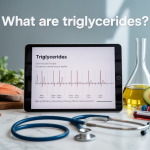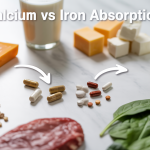Microplastics are tiny plastic particles smaller than 5 millimeters that have invaded our food, water, and air. These microscopic fragments now contaminate nearly everything we consume and breathe, creating serious health risks that scientists are just beginning to understand.
This guide is for health-conscious individuals, parents, and anyone concerned about environmental toxins affecting their wellbeing. You’ll discover how these invisible particles infiltrate your body and damage multiple organ systems.
We’ll explore how microplastics harm your respiratory system when you breathe them in, disrupt your digestive system and gut health, and interfere with your hormones. You’ll also learn about their impact on your heart, immune system, and brain function—giving you the knowledge to make informed decisions about protecting your health.
Understanding Microplastics and Their Widespread Presence

What microplastics are and how they form
Microplastics are tiny plastic particles measuring less than 5 millimeters in diameter – roughly the size of a sesame seed or smaller. These microscopic fragments come in two main types: primary microplastics, which are manufactured to be small (like microbeads in cosmetics), and secondary microplastics, which result from the breakdown of larger plastic items.
Secondary microplastics form through various environmental processes. UV radiation from sunlight breaks down plastic polymers, making them brittle and prone to fragmentation. Wave action in oceans, wind erosion, and mechanical wear from washing machines all contribute to breaking larger plastics into smaller pieces. Even something as simple as opening a plastic bottle or walking on synthetic carpets releases these particles into the environment.
The breakdown process is relentless. A single plastic bag can fragment into millions of microplastic particles over several decades. Synthetic textiles shed thousands of microfibers with each wash cycle, while car tires release particles as they wear down on roadways. These particles don’t biodegrade – they simply become smaller and more numerous over time.
Common sources of microplastics in daily life
Microplastics infiltrate virtually every aspect of modern life. Drinking water contains these particles regardless of the source – tap water, bottled water, and even well water all show contamination. Bottled water often contains twice as many microplastic particles as tap water, likely due to the plastic packaging and processing methods.
Food sources present another major exposure pathway:
- Seafood and fish – Marine animals consume microplastics directly from water or through contaminated prey
- Salt – Sea salt and rock salt both contain microplastic particles from environmental contamination
- Honey and beer – These products show widespread contamination across different geographic regions
- Processed foods – Packaging materials and processing equipment contribute to microplastic content
Personal care products represent a significant source of primary microplastics. Face scrubs, toothpastes, and body washes often contain polyethylene or polypropylene microbeads. Cosmetics like lipstick, foundation, and mascara frequently include plastic particles for texture and durability.
Household items constantly shed microplastics. Synthetic clothing releases fibers during washing, with fleece garments being particularly problematic. Plastic food containers, especially when heated, release particles into food and beverages. Even tea bags made from plastic materials can release billions of microplastic particles into hot water.
Indoor air contains microplastics from carpet fibers, furniture, and dust. Studies show indoor concentrations often exceed outdoor levels due to limited air circulation and multiple plastic sources within homes.
How microplastics enter the human body
The human body encounters microplastics through three primary routes: ingestion, inhalation, and dermal absorption. Each pathway presents unique challenges for the body’s natural defense mechanisms.
Ingestion represents the most significant exposure route. Every meal potentially introduces microplastics through contaminated food and beverages. The digestive system cannot break down these synthetic particles, allowing them to accumulate in various organs. Smaller particles can cross intestinal barriers and enter the bloodstream, while larger fragments may remain in the digestive tract.
Inhalation occurs continuously as we breathe air containing suspended plastic particles. Urban environments show higher concentrations of airborne microplastics from tire wear, synthetic textile fibers, and industrial emissions. The respiratory system’s filtering mechanisms cannot effectively capture the smallest particles, which can reach deep into lung tissue and potentially enter the bloodstream through the alveoli.
Dermal absorption happens when microplastics in personal care products contact the skin. While the skin typically acts as an effective barrier, very small particles may penetrate through hair follicles or areas where the skin barrier is compromised. The extent of dermal absorption remains under investigation, but evidence suggests this route contributes to overall body burden.
Once inside the body, microplastics can travel through the circulatory system to various organs. Research has detected these particles in human blood, placental tissue, and even in the deepest parts of the lungs. The body’s immune system recognizes these foreign particles but lacks effective mechanisms to eliminate them, leading to potential accumulation over time.
Respiratory System Damage from Microplastic Inhalation
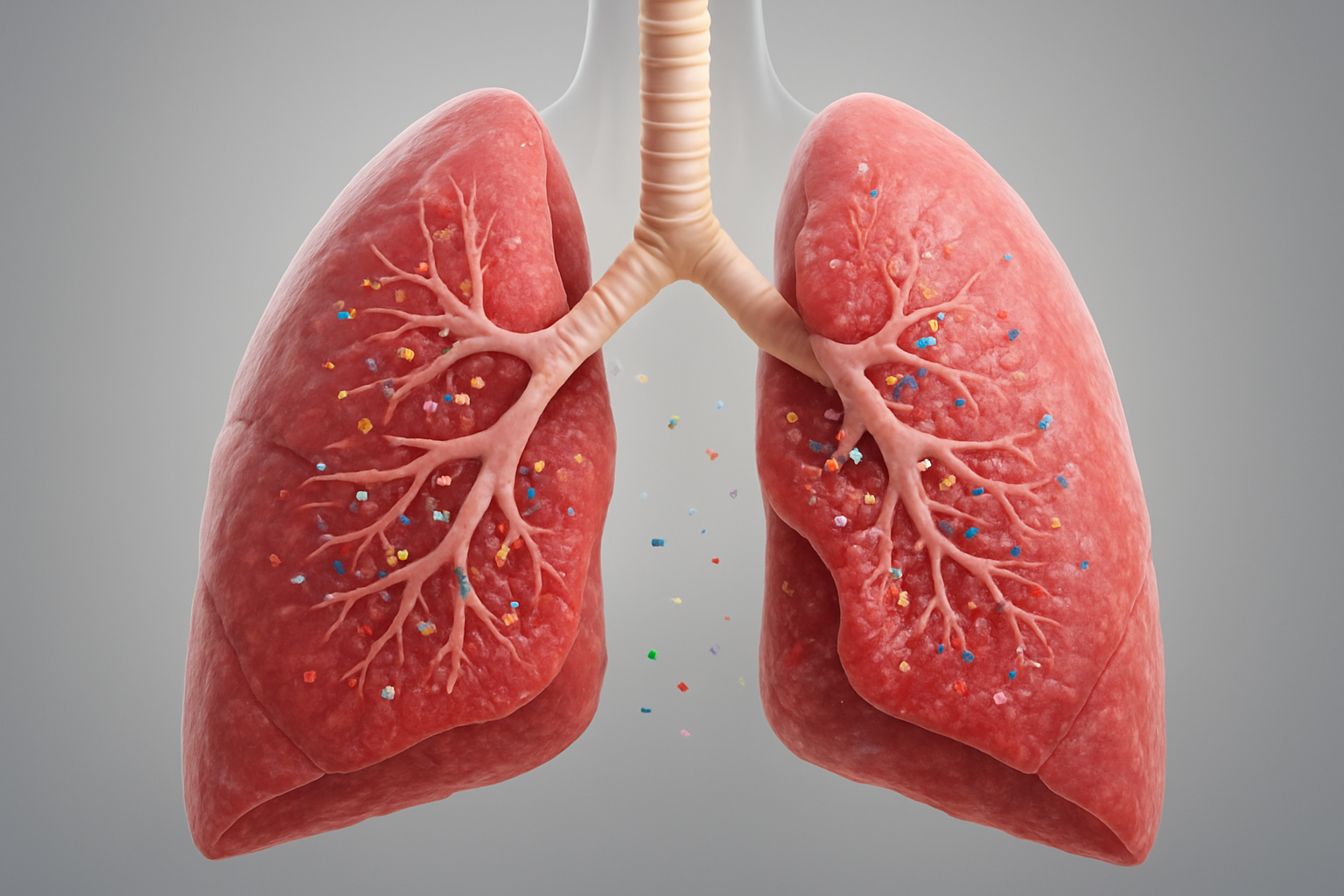
Lung Tissue Inflammation and Irritation
When you breathe in microplastics, your lungs react like they’re under attack. These tiny plastic particles trigger an immediate inflammatory response as your body tries to defend itself against what it sees as foreign invaders. The delicate tissues lining your airways become red, swollen, and irritated, much like what happens during an allergic reaction or when you’re exposed to smoke.
Your immune cells rush to the scene, releasing chemicals that cause even more inflammation. This creates a vicious cycle where the irritation keeps getting worse. People exposed to high levels of airborne microplastics often experience persistent coughing, wheezing, and that uncomfortable feeling of tightness in their chest. The inflammation doesn’t just stay in one spot either – it can spread throughout your respiratory system, affecting everything from your nose and throat down to the smallest air sacs in your lungs.
Reduced Lung Function and Breathing Capacity
Microplastic buildup seriously messes with how well your lungs work. Think of your lungs like a complex air filtration system – when plastic particles clog up the works, everything starts running less efficiently. Your breathing becomes more labored, and you might find yourself getting winded doing things that never bothered you before.
The plastic particles can block tiny airways and reduce the surface area available for oxygen exchange. This means less oxygen gets into your bloodstream with each breath you take. Many people notice they can’t exercise as hard as they used to, or they feel short of breath climbing stairs. Even simple activities like walking the dog or carrying groceries can leave you huffing and puffing.
Your lung capacity – basically how much air you can hold and move in and out – starts declining over time. Breathing tests show measurable drops in lung function among people regularly exposed to microplastics, similar to what doctors see in smokers or people with chronic respiratory diseases.
Increased Risk of Respiratory Infections
Microplastics create the perfect storm for respiratory infections to take hold. These plastic particles damage the protective barriers in your respiratory system, making it much easier for bacteria, viruses, and other harmful microorganisms to establish infections.
Your respiratory tract has natural defense mechanisms – tiny hairs called cilia that sweep out debris, along with mucus that traps germs. Microplastics interfere with these protective systems, essentially breaking down your first line of defense against respiratory infections. The plastic particles can also carry harmful bacteria on their surfaces, delivering pathogens directly into your lungs.
People with microplastic exposure tend to get sick more often with:
- Frequent colds and flu
- Bronchitis that keeps coming back
- Pneumonia and other serious lung infections
- Sinus infections that won’t clear up
The infections often last longer and are harder to treat because your damaged respiratory system can’t fight them off as effectively as it should.
Long-term Scarring and Permanent Damage
Perhaps most concerning is what happens over months and years of microplastic exposure. Your lungs try to heal from the constant irritation and inflammation, but sometimes the repair process goes wrong. Instead of healthy tissue growing back, tough, inflexible scar tissue forms in its place.
This scarring process, called pulmonary fibrosis, permanently reduces your lung function. Unlike healthy lung tissue that stretches and contracts easily with each breath, scar tissue is rigid and doesn’t allow for proper air exchange. Once this scarring occurs, it’s usually irreversible.
The damage accumulates slowly, so you might not notice it at first. By the time symptoms become obvious – like persistent shortness of breath or a chronic dry cough – significant scarring has already occurred. Some people develop what looks very similar to the lung damage seen in coal miners or asbestos workers, with thick, fibrous tissue replacing normal lung architecture.
Long-term studies are still ongoing, but early evidence suggests that people with chronic microplastic exposure may face permanently reduced quality of life due to breathing difficulties that only get worse with time.
Digestive System Disruption and Gut Health Problems
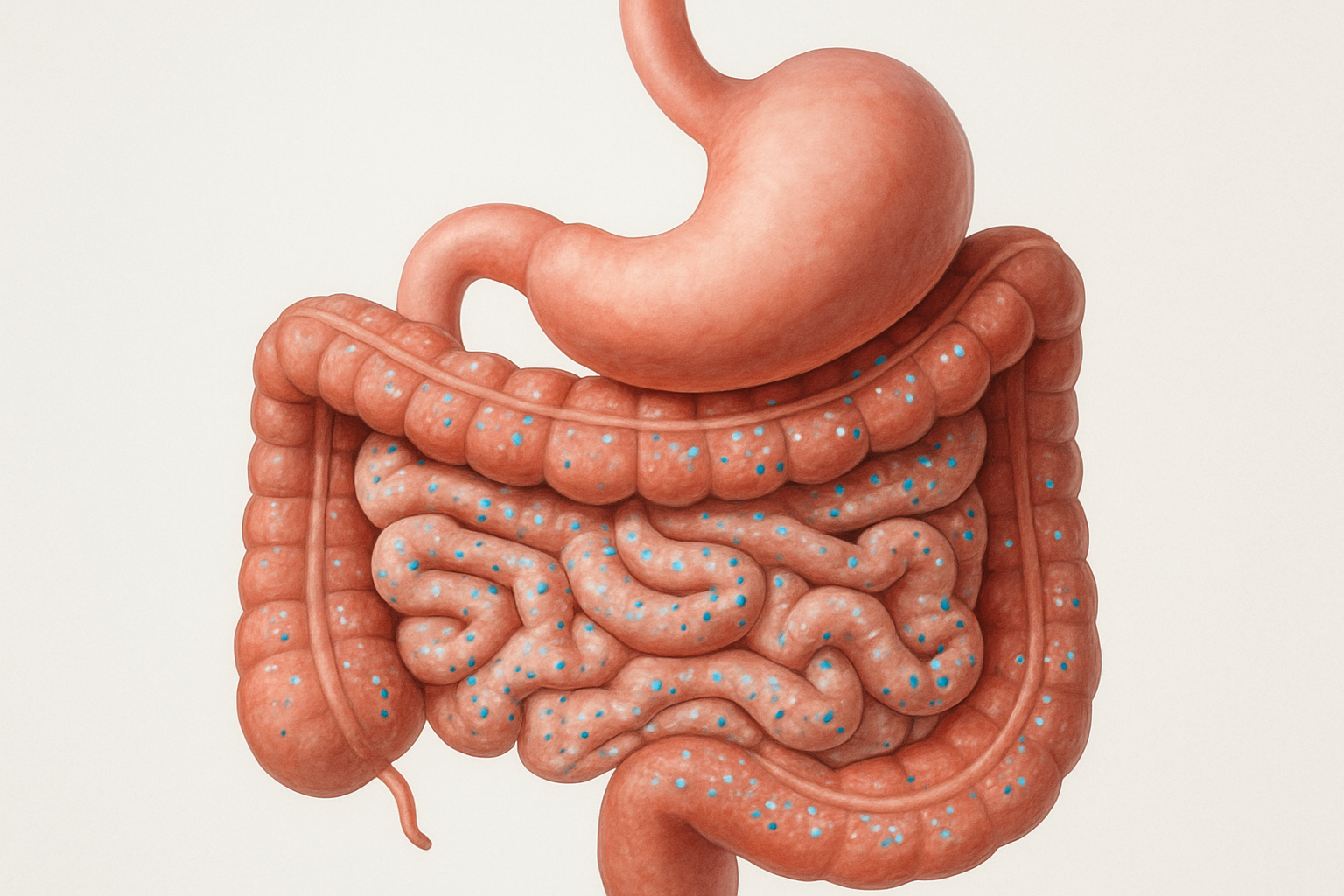
Intestinal Barrier Damage and Leaky Gut Syndrome
When microplastics enter your digestive system, they act like tiny invaders that can seriously damage your intestinal lining. These microscopic particles slip through your stomach and make their way into your small intestine, where they start causing real problems. Your intestinal wall is designed to be selective – letting nutrients through while keeping harmful substances out. But microplastics can physically damage this protective barrier.
Research shows that these plastic particles can create gaps between the cells that line your intestinal wall. Think of it like putting tiny holes in a screen door – suddenly things that shouldn’t get through start slipping past your defenses. This condition is called leaky gut syndrome, and it’s becoming increasingly common as microplastic exposure rises.
The damage happens in several ways:
- Physical puncturing: Sharp-edged plastic fragments can literally poke holes in intestinal cells
- Chemical irritation: Toxic additives in plastics cause inflammation and cell death
- Tight junction disruption: Microplastics interfere with the protein connections that keep intestinal cells sealed together
When your gut becomes leaky, partially digested food particles, toxins, and bacteria can escape into your bloodstream. Your immune system sees these as foreign invaders and launches an attack, creating inflammation throughout your body. This can trigger food sensitivities, autoimmune reactions, and chronic fatigue that many people can’t explain.
Harmful Changes to Gut Microbiome Balance
Your gut houses trillions of beneficial bacteria that help digest food, produce vitamins, and protect against harmful microorganisms. Microplastics throw this delicate ecosystem completely out of balance. When plastic particles accumulate in your intestines, they create an environment where harmful bacteria thrive while beneficial ones struggle to survive.
Studies reveal that microplastic exposure leads to several concerning changes:
| Beneficial Bacteria | Impact | Harmful Bacteria | Impact |
|---|---|---|---|
| Lactobacillus | Significantly reduced | E. coli | Increased growth |
| Bifidobacterium | Decreased populations | Clostridium | Enhanced colonization |
| Akkermansia | Impaired function | Enterococcus | Higher concentrations |
The plastic particles provide hiding spots for pathogenic bacteria while releasing toxic chemicals that kill off your good bacteria. This imbalance, called dysbiosis, affects your entire body. Your good bacteria normally help break down food, synthesize essential B vitamins and vitamin K, and train your immune system to recognize real threats versus harmless substances.
When this balance gets disrupted, you might experience:
- Digestive issues like bloating, gas, and irregular bowel movements
- Increased susceptibility to infections
- Poor nutrient absorption leading to deficiencies
- Mental health changes due to the gut-brain connection
Your gut bacteria also communicate directly with your brain through the vagus nerve and by producing neurotransmitters like serotonin. When microplastics mess with this communication system, you might notice mood changes, anxiety, or brain fog that seems to come out of nowhere.
Chronic Inflammation in Digestive Tract
Microplastics turn your digestive system into a battleground of chronic inflammation. Unlike acute inflammation that helps your body heal from injuries, this ongoing inflammatory response never shuts off. Your immune system treats these plastic particles as permanent foreign invaders, keeping your digestive tract in a constant state of red alert.
The inflammatory process starts when immune cells called macrophages try to engulf and destroy the microplastic particles. But here’s the problem – these plastic pieces are virtually indestructible. Your immune cells can’t break them down, so they keep trying, releasing inflammatory chemicals called cytokines in the process.
This creates a vicious cycle:
- Microplastics accumulate in intestinal tissue
- Immune cells attack but can’t eliminate the particles
- Inflammatory chemicals flood the surrounding tissue
- More immune cells arrive to help with the “threat”
- Inflammation spreads to other parts of the digestive system
The result is a chronically inflamed gut that affects your entire body. This persistent inflammation can damage the intestinal lining, making it even easier for harmful substances to leak through. Blood vessels in the area become more permeable, allowing inflammatory molecules to enter your bloodstream and travel throughout your body.
People with chronic gut inflammation often experience symptoms that extend far beyond digestive problems. You might notice joint pain, skin issues, frequent headaches, or general fatigue. The inflammation can even affect your liver’s ability to detoxify your body, creating a cascade of health problems that seem unrelated to your gut but actually stem from this ongoing inflammatory response to microplastic contamination.
Cardiovascular System Impact and Heart Health Risks

Microplastics Accumulation in Blood Vessels
Recent scientific discoveries reveal that microplastic particles can actually enter our bloodstream and accumulate within blood vessels. These tiny particles, measuring less than 5 millimeters in diameter, have been detected in human blood samples using advanced detection methods. Once in the cardiovascular system, these particles can lodge themselves in the walls of arteries and veins, creating potential blockages and inflammatory responses.
The accumulation process occurs when microplastics enter through ingestion, inhalation, or even skin contact. The particles are small enough to cross biological barriers and make their way into the circulatory system. Studies have found various types of plastic polymers in blood vessels, including polyethylene terephthalate (PET), polyethylene, and polystyrene – common materials found in everyday plastic products.
Increased Risk of Blood Clots and Circulation Problems
Microplastic particles act as foreign bodies in the bloodstream, triggering the body’s natural clotting mechanisms. When these particles circulate through blood vessels, they can activate platelets and other clotting factors, leading to the formation of blood clots. This process disrupts normal blood flow and can cause serious circulation problems throughout the body.
The physical presence of microplastics also creates rough surfaces within otherwise smooth blood vessels. This roughness can catch blood cells and other components, creating additional sites where clots may form. Poor circulation results in:
- Reduced oxygen delivery to tissues
- Slower wound healing
- Cold extremities
- Increased fatigue
- Potential organ dysfunction
Elevated Blood Pressure and Heart Disease Risk
Microplastic contamination contributes to increased blood pressure through multiple mechanisms. The accumulation of particles in blood vessel walls causes inflammation, leading to arterial stiffening and reduced flexibility. When arteries become less elastic, the heart must work harder to pump blood, resulting in elevated blood pressure readings.
The inflammatory response triggered by microplastics also accelerates atherosclerosis – the buildup of fatty deposits in arterial walls. This process narrows blood vessels and further increases blood pressure. Chronic exposure to microplastics has been linked to:
| Risk Factor | Impact Level | Timeline |
|---|---|---|
| Arterial stiffening | High | 6-12 months |
| Inflammatory markers | Very High | 2-6 weeks |
| Plaque formation | Moderate | 1-3 years |
| Blood pressure elevation | High | 3-6 months |
Potential for Heart Attack and Stroke
The combination of blood clots, elevated blood pressure, and compromised circulation significantly increases the risk of major cardiovascular events. Microplastics create a perfect storm for heart attacks and strokes by disrupting multiple aspects of cardiovascular health simultaneously.
Heart attacks can occur when microplastic-induced blood clots block coronary arteries, cutting off blood supply to heart muscle. The inflammatory response caused by these particles also destabilizes existing arterial plaques, making them more likely to rupture and cause sudden blockages.
Stroke risk increases as microplastic particles and associated blood clots can travel to brain blood vessels. When these particles block cerebral arteries, they prevent oxygen-rich blood from reaching brain tissue. The smaller size of brain blood vessels makes them particularly vulnerable to microplastic-related blockages.
Emergency symptoms requiring immediate medical attention include:
- Sudden chest pain or pressure
- Difficulty breathing
- Numbness or weakness on one side of the body
- Sudden severe headache
- Vision changes or loss
- Difficulty speaking or understanding speech
Hormonal Disruption and Endocrine System Interference
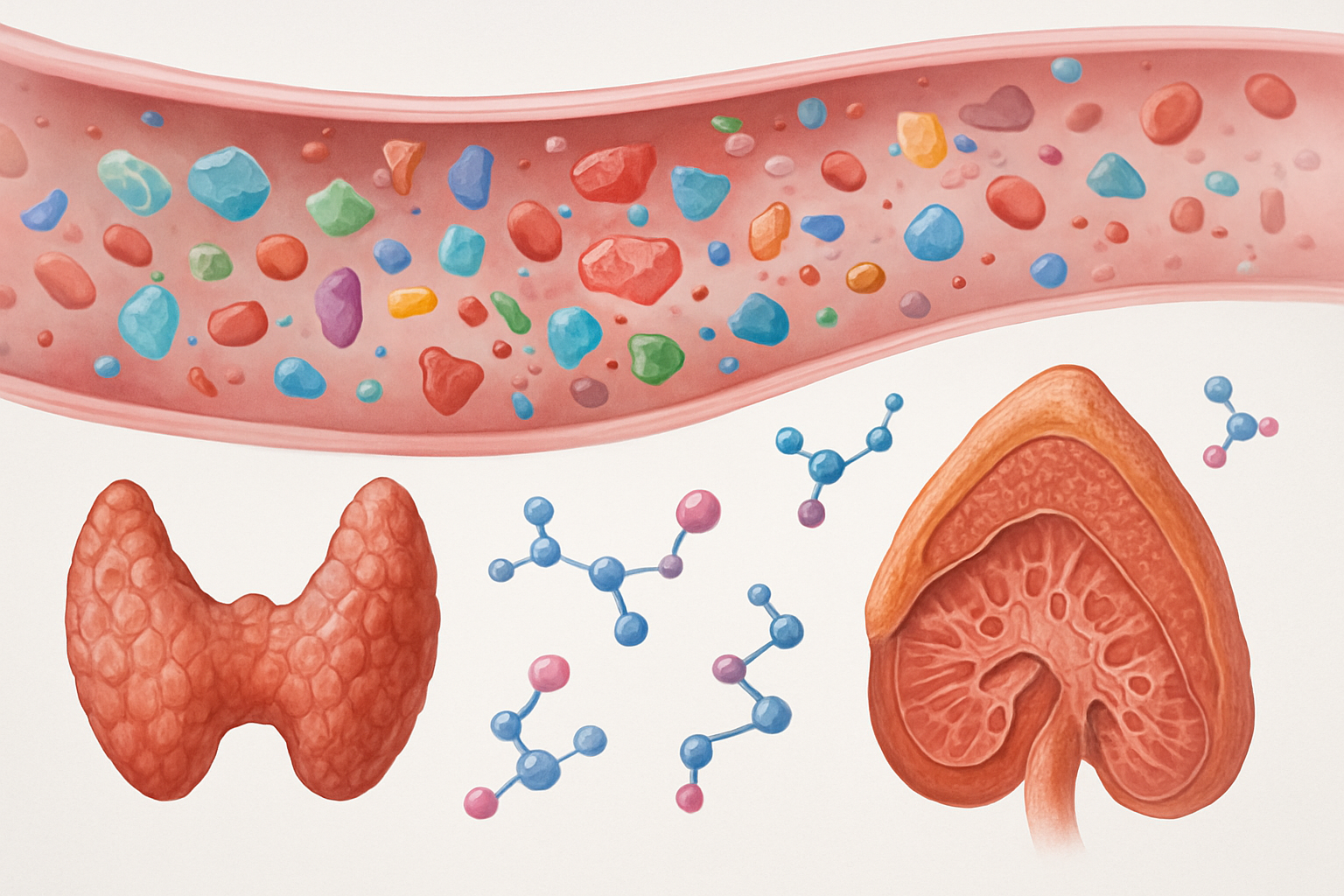
Toxic Chemical Release Affecting Hormone Production
Microplastics act like tiny chemical carriers in your body, releasing harmful compounds directly into your bloodstream. These particles contain additives like bisphenol A (BPA), phthalates, and flame retardants that were added during manufacturing. When microplastics break down inside your body, they release these chemicals at a steady rate.
Your endocrine system mistakes these plastic chemicals for natural hormones because they have similar molecular structures. BPA, for example, mimics estrogen so well that your body can’t tell the difference. This creates chaos in your hormone signaling pathways, leading to either too much or too little hormone activity.
The liver, which normally processes and eliminates toxins, becomes overwhelmed by the constant influx of plastic chemicals. This creates a backlog that allows these compounds to circulate longer in your system, amplifying their disruptive effects on hormone production and regulation.
Reproductive Health Problems and Fertility Issues
Plastic particles directly target your reproductive organs, causing significant fertility problems in both men and women. In men, microplastics reduce sperm count, decrease sperm motility, and cause DNA damage in sperm cells. Studies show that men with higher microplastic exposure have 40% lower sperm concentrations than those with minimal exposure.
Women face equally serious reproductive challenges. Microplastics disrupt ovulation cycles, reduce egg quality, and interfere with implantation. They also cross the placental barrier during pregnancy, potentially affecting fetal development. Research has found plastic particles in placentas, raising concerns about direct exposure to developing babies.
The chemicals released by microplastics also interfere with sex hormone production. They can block testosterone production in men and disrupt estrogen balance in women, leading to irregular menstrual cycles, reduced libido, and difficulty conceiving.
Thyroid Function Disruption
Your thyroid gland is particularly vulnerable to microplastic interference because it relies on precise chemical signals to function properly. Plastic chemicals mimic thyroid hormones, confusing the gland and disrupting its normal feedback mechanisms.
These disruptions manifest as:
- Hypothyroidism: Sluggish metabolism, weight gain, fatigue
- Hyperthyroidism: Rapid heartbeat, anxiety, unexplained weight loss
- Autoimmune thyroid conditions: Hashimoto’s disease, Graves’ disease
Microplastics also interfere with iodine uptake, which is essential for thyroid hormone production. Without adequate iodine absorption, your thyroid can’t produce enough hormones to maintain normal metabolism. This creates a cascade of health problems that affect every system in your body.
Metabolic Disorders and Weight gain
Microplastics seriously mess with your metabolism by disrupting hormones that control hunger, fat storage, and energy use. These particles interfere with insulin signaling, making your cells less responsive to this crucial hormone. This leads to higher blood sugar levels and increased fat storage, particularly around your midsection.
The plastic chemicals also disrupt leptin, the hormone that tells your brain when you’re full. When leptin signaling is impaired, you feel hungry even after eating adequate amounts of food. This drives overeating and makes weight management extremely difficult.
Common metabolic disruptions include:
- Insulin resistance leading to type 2 diabetes
- Increased appetite and food cravings
- Slower metabolic rate making weight loss harder
- Abnormal fat distribution particularly belly fat accumulation
Developmental Issues in Children
Children face the highest risk from microplastic exposure because their endocrine systems are still developing. Plastic chemicals can permanently alter hormone pathways during critical growth periods, leading to lifelong health problems.
Early exposure affects:
- Growth patterns: Delayed or accelerated puberty
- Brain development: Learning difficulties, behavioral problems
- Immune system formation: Increased allergy and asthma rates
- Metabolic programming: Higher obesity risk later in life
Children absorb microplastics more readily than adults due to their higher metabolic rates and developing digestive systems. They also have less developed detoxification pathways, meaning plastic chemicals stay in their systems longer. This extended exposure during crucial developmental windows can cause irreversible changes to their hormonal systems.
Prenatal exposure is particularly concerning, as microplastics can cross the placenta and affect fetal development. Babies born to mothers with high microplastic exposure show altered hormone levels and increased risk of developmental delays.
Immune System Weakening and Autoimmune Responses

Compromised immune function and frequent illness
Microplastics create a perfect storm for immune system dysfunction by overwhelming our body’s natural defenses. When these tiny particles enter our bloodstream, immune cells recognize them as foreign invaders and launch an attack. However, microplastics can’t be broken down or eliminated like bacteria or viruses, forcing immune cells to work overtime without resolution.
This constant state of alert exhausts immune resources, leaving less protection available for actual threats like viruses, bacteria, and other pathogens. People exposed to higher levels of microplastics often experience:
- More frequent colds and respiratory infections
- Slower wound healing and recovery times
- Increased susceptibility to seasonal illnesses
- Persistent low-grade inflammation throughout the body
The immune system’s energy gets diverted from its primary job of protecting against real diseases. White blood cells become less effective at identifying and destroying harmful microorganisms, creating vulnerability to infections that would normally be easily handled.
Allergic reactions and hypersensitivity development
Microplastic exposure can rewire immune responses, making the body hypersensitive to normally harmless substances. These particles act as adjuvants, amplifying inflammatory reactions and training immune cells to overreact to environmental triggers.
Common allergic responses linked to microplastic exposure include:
| Symptom Type | Manifestations |
|---|---|
| Skin reactions | Eczema, dermatitis, unexplained rashes |
| Respiratory | Asthma flare-ups, allergic rhinitis |
| Food sensitivities | New intolerances to previously safe foods |
| Environmental | Heightened reactions to pollen, dust |
The inflammatory compounds released by immune cells responding to microplastics can cross-react with proteins in foods, pollens, and other environmental substances. This cross-reactivity explains why some people suddenly develop allergies to foods they’ve eaten their entire lives or become sensitive to environmental factors that never bothered them before.
Autoimmune disease trigger potential
Microplastics can trigger autoimmune responses where the immune system mistakenly attacks healthy tissues. The molecular mimicry between certain plastic compounds and human proteins confuses immune cells, leading them to target the body’s own cells and tissues.
Research suggests microplastic exposure may contribute to:
- Rheumatoid arthritis development and flare-ups
- Inflammatory bowel diseases like Crohn’s and ulcerative colitis
- Autoimmune thyroid disorders
- Lupus and other connective tissue diseases
The chronic inflammation caused by persistent microplastic presence creates an environment where autoimmune diseases can flourish. Immune cells become hypervigilant and start attacking healthy tissues that share similar molecular structures with plastic particles. This process can take months or years to manifest as clinical symptoms, making the connection between microplastic exposure and autoimmune disease development difficult to identify without careful investigation.
Neurological Effects and Brain Health Concerns

Blood-brain barrier penetration and neural damage
Microplastics can cross one of the body’s most protective barriers: the blood-brain barrier. This selective membrane typically prevents harmful substances from reaching brain tissue, but research shows that plastic particles smaller than 10 micrometers can slip through this defense system. Once inside the brain, these particles accumulate in neural tissue and can remain there indefinitely.
The presence of microplastics in brain tissue triggers inflammatory responses that damage neurons. Studies have found plastic particles embedded in brain cells, where they disrupt normal cellular functions and interfere with neurotransmitter production. The sharp edges of some plastic fragments can physically damage delicate neural structures, while the chemical additives they carry – including plasticizers, flame retardants, and stabilizers – create toxic environments that poison brain cells.
Animal studies demonstrate that microplastic exposure leads to measurable brain tissue damage, including reduced neuron density and altered brain structure. The hippocampus, responsible for memory formation, shows particular vulnerability to plastic contamination. These particles also interfere with the brain’s waste removal system, preventing the natural clearing of toxins and damaged proteins.
Cognitive decline and memory problems
Regular exposure to microplastics correlates with noticeable declines in cognitive performance. People living in areas with high plastic pollution show reduced scores on memory tests, slower processing speeds, and difficulty with complex problem-solving tasks. The brain’s executive functions – including attention, working memory, and mental flexibility – become impaired as plastic particles accumulate in neural networks.
Memory formation suffers significantly from microplastic exposure. The hippocampus, where new memories are encoded and stored, becomes inflamed and dysfunctional when contaminated with plastic particles. This leads to problems forming new memories and retrieving existing ones. Many people report feeling mentally “foggy” or experiencing frequent forgetfulness without understanding the connection to plastic pollution.
Learning capacity also diminishes with chronic microplastic exposure. The brain’s ability to form new neural connections – called neuroplasticity – becomes compromised, making it harder to acquire new skills or adapt to changing circumstances. Children appear especially vulnerable, with studies linking prenatal microplastic exposure to developmental delays and learning disabilities.
Increased risk of neurodegenerative diseases
Microplastic accumulation in the brain creates conditions that accelerate neurodegenerative processes. The chronic inflammation caused by plastic particles mirrors the inflammatory patterns seen in Alzheimer’s disease, Parkinson’s disease, and other neurodegenerative conditions. This suggests that microplastic exposure may trigger or worsen these devastating disorders.
The toxic chemicals carried by microplastics interfere with protein folding in brain cells, leading to the formation of abnormal protein clusters characteristic of neurodegenerative diseases. These misfolded proteins accumulate over time, eventually killing neurons and causing progressive brain deterioration. Research indicates that people with higher microplastic levels in their bodies show earlier onset and more rapid progression of neurodegenerative symptoms.
Parkinson’s disease risk appears particularly elevated in individuals with significant microplastic exposure. The plastic particles concentrate in the substantia nigra, the brain region most affected by Parkinson’s, where they accelerate the death of dopamine-producing neurons. Similarly, Alzheimer’s-related brain changes occur more frequently and severely in people with detectable microplastic contamination, suggesting these particles may hasten cognitive decline and dementia onset.
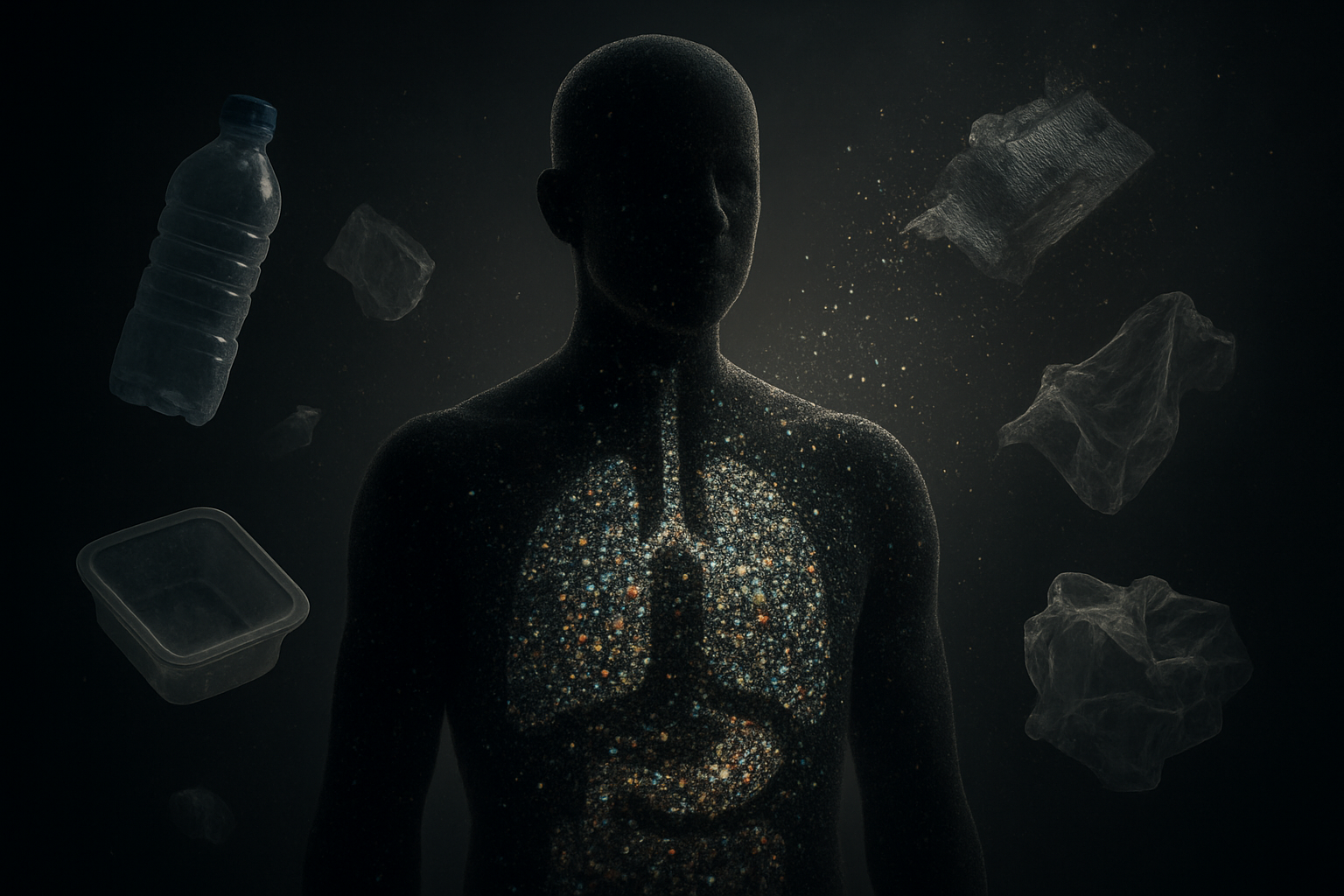
Microplastics are quietly making their way into every part of our bodies, causing real damage to our health in ways we’re just beginning to understand. From the air we breathe to the food we eat, these tiny plastic particles are disrupting our respiratory, digestive, and cardiovascular systems while messing with our hormones and weakening our immune defenses. Even more concerning, they’re crossing into our brains and potentially affecting our neurological health.
The evidence is clear – microplastics aren’t just an environmental problem anymore. They’re a personal health crisis that requires immediate attention. Start by choosing glass or stainless steel containers over plastic ones, filter your drinking water, and support brands that prioritize plastic-free packaging. Small changes in your daily habits can significantly reduce your exposure and protect your long-term health.
